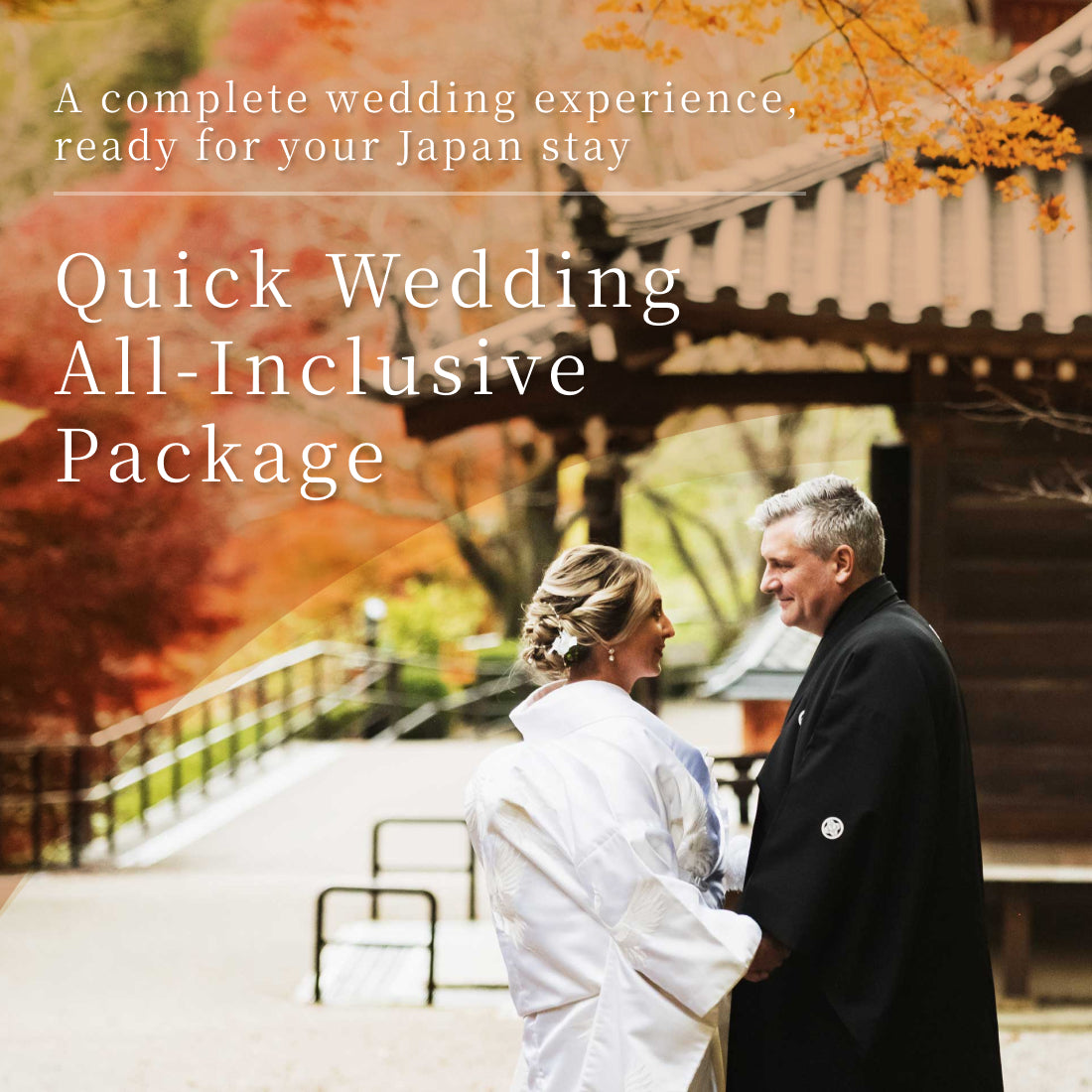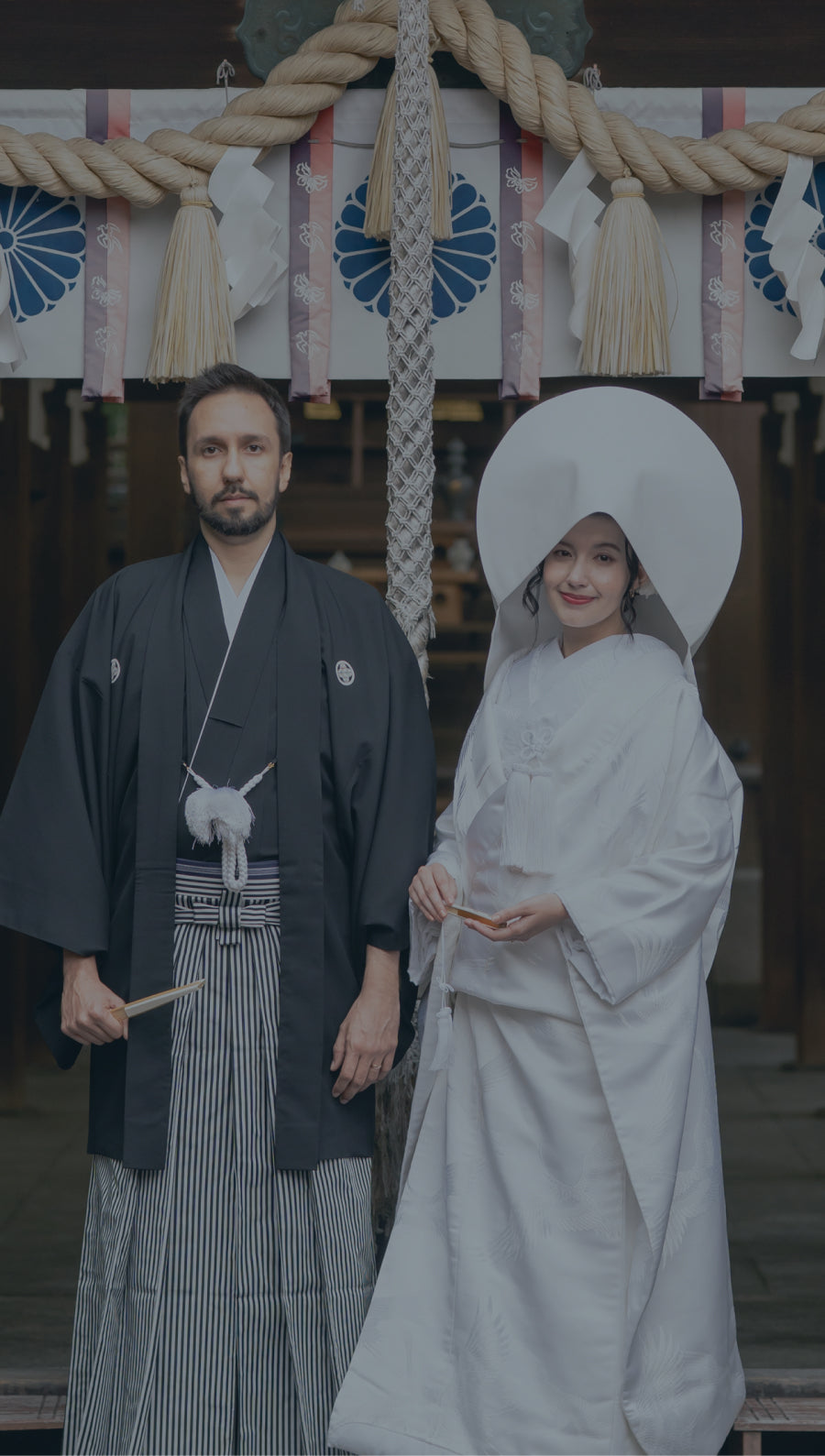
Experience
a Shinto Wedding
Overview of Shinto Wedding
Shinto weddings are traditional Japanese ceremonies uniting couples before the gods. Symbolizing purification and family union, they originated in the 8th century but gained popularity after the 1900 imperial wedding. Today, they blend ancient rituals with modern celebrations, immersing couples in Japan's rich cultural heritage.

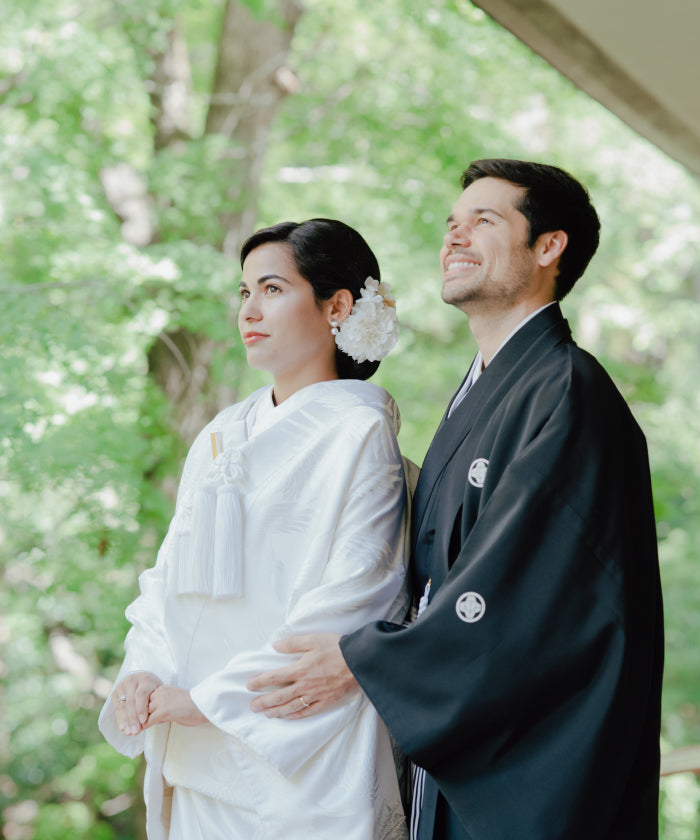
Vows and Deities
At shrines, couples make vows to Shinto gods, honoring nature and ancestral deities. In temples, vows are based on Buddhist teachings, made to Buddha and ancestors. Both offer sacred, solemn atmospheres and can be chosen based on the couple's beliefs or family traditions. Either choice provides a blessed start to the couple's new life together.
Shinto Wedding Ceremony Process(Example)
A Shinto wedding ceremony typically follows these steps.
-
Sanshin:
Couple's Procession to the Altar
Sanshin marks the couple's entry into sacred space. Their quiet walk shows respect for gods and marriage, symbolizing their shared commitment. This ritual purifies them for their vows.
-
Shubatsu:
Symbolic Purification
The priest purifies the couple using a sacred cedar branch, removing worldly impurities. This ritual prepares them to enter the sacred marriage ceremony in a pure state.
-
Norito-sojo:
Priest Reports Marriage to the Gods
The priest conveys the couple's marriage intention to the gods. This crucial moment seeks divine approval and blessings, emphasizing the sanctity of marriage.
-
San-san-kudo:
Ceremony of Three Cups
Couple shares three cups of sake, three sips each. Cups symbolize past, present, future; sips honor gods, family, guests. Signifies marital bond and lifelong commitment.
-
Seishi-sodomoku:
Reading of Vows
The couple pledges love and loyalty. This oath before gods and guests symbolizes the public and sacred promise of marriage.
-
Ring Exchange:
Popular Modern Element
Couples exchange rings as symbols of eternal love. Though a relatively new, Western-influenced element, it's now common in many Shinto and Buddhist weddings.
-
Tamagushi-hoten:
Offering Sacred Branches
The couple offers gratitude and prayers to the gods. This act expresses respect, thankfulness, and wishes for future blessings.
-
Shinzoku-hai:
Family Cup Exchange
The families of the bride and groom share cups. This ritual blesses the union of two families and strengthens new familial bonds.
Each of these sacred rituals blends ancient traditions with modern elements, creating a unique and meaningful experience for couples beginning their new life together.
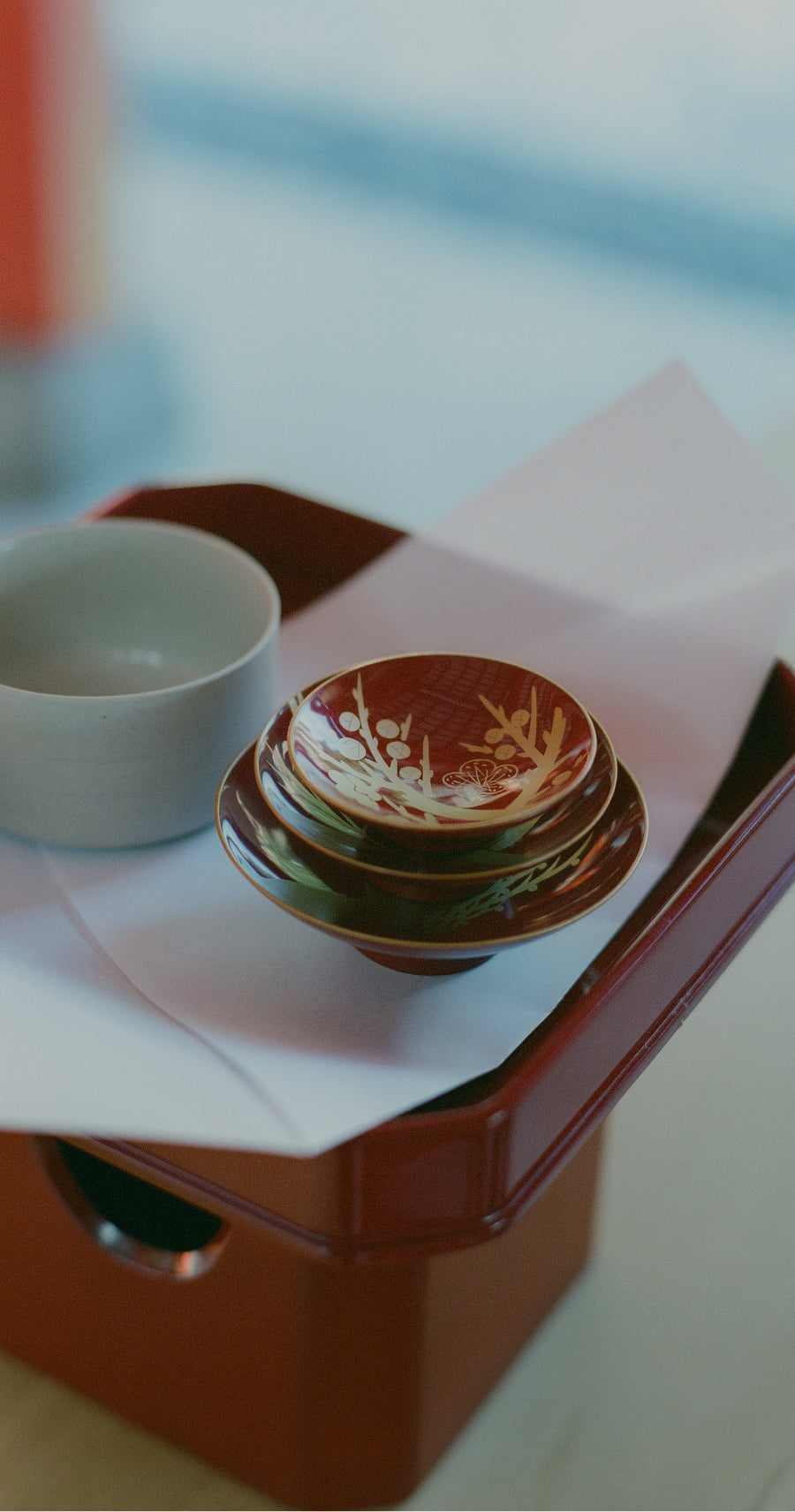
The Role of Shrines in Shinto Weddings
Shrines (jinja) are sacred spaces for traditional Japanese weddings. The main sanctuary (honden) hosts key rituals, while guests observe from the worship hall (haiden). Beautiful gardens and red torii gates often provide a stunning backdrop.

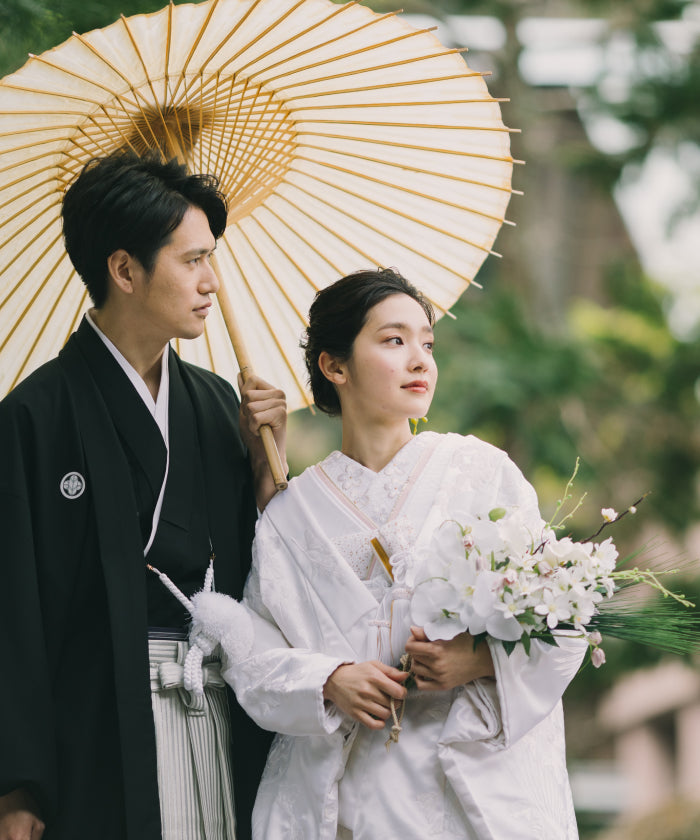
Sacred Vows at a Shinto Shrine
We specialize in traditional Japanese Shinto weddings for international couples.
我們提供的服務包括:
- Kimono rental
- Shrine booking
- Hair, makeup, photography and videography
- Interpreter arrangement
- On-site interpretation
- Shinto expert guidance
- Comprehensive ceremony planning
Our English-speaking staff will support you throughout the process.
-
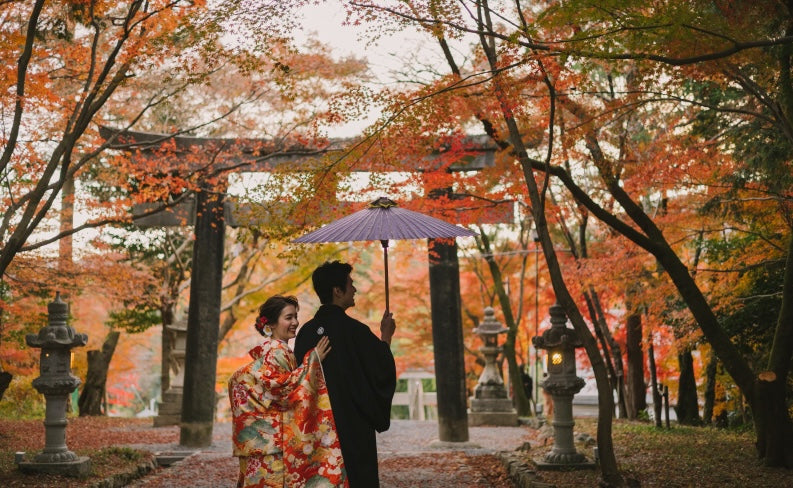
Shinto Wedding Package
Ideal for couples seeking an authentic ceremony at a Japanese shrine or temple.
-
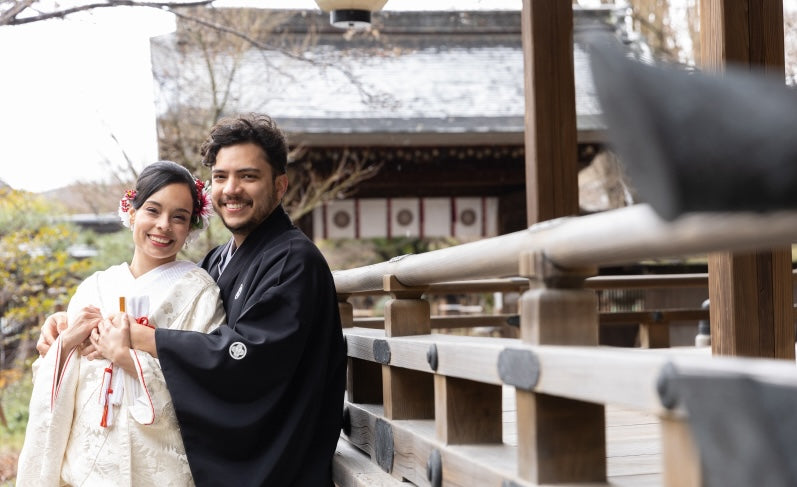
Photo Session Package
Ideal for couples wanting photos in traditional Japanese wedding attire.

Steps to Shinto Wedding
We'll guide you through all preparations until your ceremony day. Enjoy peace of mind with our multilingual email support from inquiry to the event.
Frequently Asked Questions
-
神道婚禮儀式可以提前多久預訂?
-
能告訴我神道婚禮儀式的大致總費用嗎?
-
神道婚禮儀式大約需要多長時間?
-
神道婚禮儀式對參加人數有限制嗎?
-
神道婚禮儀式會有彩排嗎?
-
在神道婚禮儀式上,我們可以用母語說誓言嗎?
-
神道婚禮儀式後,可以在旅遊景點拍照嗎?你們能幫忙安排嗎?
-
你們能為神道婚禮準備紀念品(比如護身符)嗎?
-
你們有提供將神道婚禮儀式拍攝並後期製作成視頻的服務嗎?
-
參加神道婚禮的客人在著裝和攜帶物品方面有什麼需要注意的嗎?

























































